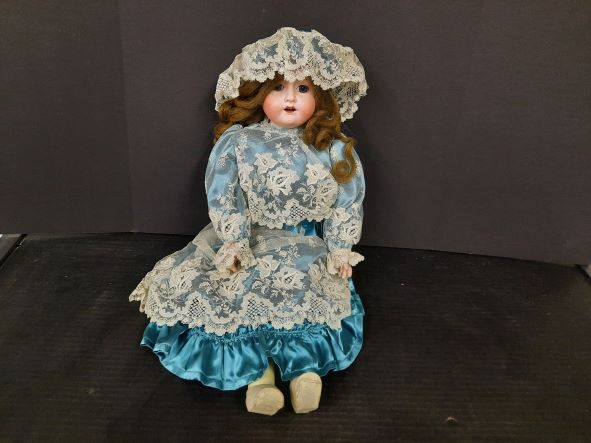
Doll with bisque head, and jointed leather body.
Doll with bisque head, and jointed leather body. Has blue sleep eyes, light brown hair, which appears to be real. Open mouth showing teeth. Wearing blue satin clothes with lace made by Anne Mandich, and which are accessioned separately under 1987.024. Note with the doll advised that the kid leather body was replaced by Chris Nancarrow, Conservator of BC Provincial Museum (REtired).
The history of the Morimura family firm in Japan dates back to the 18th century. But the story of the company concerning dolls begins in 1878, with brothers Ichizaemon and Toro Morimura. Ichizaemon�s operation in Japan exported a variety of ceramics and other goods, which sold at Toro�s retail store in New York City.
In the 1890s, the Morimura Brothers became a wholesale operation, and in 1899, they began producing their own porcelain. When the start of World War I created a shortage of German imports to the U.S., the company saw an opportunity to manufacture bisque dolls, children�s tea sets, and other toys to fill the void.
Morimura established Nippon Gangu (Japan Toy) Company in 1917 and built a new factory in Nagoya, with technical assistance from Froebel-Kan, a Tokyo toy shop. A steady stream of dolls with bisque heads on composition and imitation kid bodies, as well as all-bisque dolls, were shipped to the U.S. for distribution over the next four years. Frederick Langfelder was one of their designers. They also manufactured dolls specifically for Froebel-Kan.